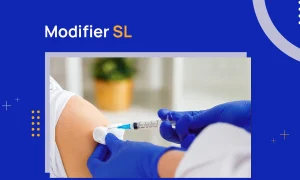Medical billing is complex and can sometimes feel like a maze. That is especially true for Applied Behavior Analysis (ABA) therapists who are already stretched thin between patient care and handling paperwork. One thing that is difficult for all ABA professionals is CPT codes.
CPT code 97151 is one such code that pops up frequently in ABA therapy but confuses many billers. If you are an ABA therapist wondering which CPT codes are applicable, how the codes are used, or why your claims are getting denied, then this guide is the perfect start for you.
In this guide, we will explain CPT code 97151 in a way that is clear, practical, and easy to understand for all. So, let’s start.
CPT Code 97151 Description
CPT code 97151 is time-based and falls under the category of Adaptive Behavior Assessment Procedures, as maintained by the American Medical Association.
The code is used when a behavior analyst or a licensed psychologist conducts a behavior identification assessment of a patient. As the name suggests, the test helps analyze a patient’s behaviors. The behaviors can either be adaptive (helpful) or maladaptive (challenging), often for conditions like autism spectrum disorder (ASD) or attention deficit hyperactivity disorder (ADHD).
The CPT code 97151 contains both the professional and technical parts of the billing. This means conducting the tests, interpreting the results, writing reports, crafting treatment plans, and discussing them with the caregivers.
Now, since the 97151 is a time-based code, each unit equals 15 minutes. Also, for each assessment, you can bill for a maximum of 32 units or 8 hours. However, this limit is used as a general guideline from the AMA. In reality, different payers (Medicare, Medicaid, private insurance payers) might cap how many units you can bill per day or per assessment cycle. So, it is essential to always check each payer’s rules before providing any services.
Appropriate Use Cases for CPT Code 97151
To better understand the use of CPT code 97151, let’s look at a couple of real-world examples where it can be used.
Behavioral Assessment for Anxiety Disorders
Suppose a child is showing signs of anxiety, such as excessive worrying and avoidance of social situations. His parents take him to a qualified healthcare professional (QHP). The QHP conducts a comprehensive assessment using 97151 to understand the child’s behavior, triggers, and coping mechanisms. Doing this will enable the QHP to develop a targeted therapy approach.
Assessment of Behavioral Issues in Foster Care
A child in the foster care system is experiencing behavioral issues at home and school. The QHP utilizes 97151 to conduct a thorough assessment of the child’s emotional and behavioral health, the impact of past trauma, and the current environment, leading to tailored intervention strategies.
Modifiers to Append with CPT Code 97151
The modifiers provide additional information about the service and help reduce claim denials. The same is true for code 97151. However, since the CPT code 97151 is already a holistic code, there are not many modifiers that you can use with it.
With this code, the modifiers used are usually related to the qualifications of the healthcare provider. Why does this matter? Because reimbursement rates often scale with education level. The following are the most frequently used modifiers with code 97151:
| Code | Professional Level | Examples |
|---|---|---|
| HN | Bachelors-level professional | Board Certified Assistant Behavior Analyst (BCaBA), Registered Behavior Technician (RBT) |
| HO | Masters-level professional | Board Certified Behavior Analyst (BCBA) |
| HP | Doctoral-level professional | Psychologist, Behavior Analyst with a PhD |
Reimbursement Guidelines for CPT Code 97151
Here are the most crucial billing tips and reimbursement guidelines for CPT 97151.
Confirm Provider Status
The first thing to clarify before filing for 97151 is the provider’s qualifications. After determining the qualification level, select the appropriate modifier to use. You can check the table above for more information on modifiers.
An important thing to note here is that only QHPs, like BCBAs or psychologists, can bill 97151. Make sure they are credentialed with the payer, too.
Document Everything
Filing a claim successfully depends heavily on documentation. It is essential to justify the medical treatment to the insurance payers. Attach all the relevant documents with your claim that provide details about:
- Why was the patient referred, and his background?
- What behaviors are you assessing, and which tools have you used?
- Exact time spent. This includes time for both face-to-face assessment and paperwork.
- What did you find, and the next steps?
Know Your MUE Limits
Keeping an accurate track of the time is very important to receive the right reimbursement amount. Medically Unlikely Edits (MUEs) cap daily units. Medicare allows 8 units (2 hours), and Medicaid ranges up to 32 (8 hours). If the patient has private insurance, you will have to contact the insurance provider to confirm their details.
Final Thoughts on CPT Code 97151
About 1 in 31 children in the USA has ASD, so the code 97151 is one of the most used CPT codes in the ABA billing realm. Therefore, it is essential to learn how to use it properly.
We believe that after going through this guide, you can confidently use CPT code 97151 in your medical billing operations. However, if you are not a professional biller, you might feel swamped by the claim filing procedures. Outsourcing ABA therapy billing services could be the best solution for your organization. Contact our expert billing consultants to improve reimbursements and reduce denials.



